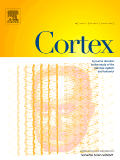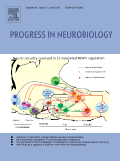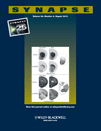
Frontiers in Neural Circuits
Scope & Guideline
Unlocking the Mysteries of the Brain's Pathways
Introduction
Aims and Scopes
- Neural Circuit Dynamics:
The journal emphasizes the study of neural circuit dynamics, exploring how different neural populations interact and contribute to behavior and cognition. - Neurodevelopment and Plasticity:
Research on neural development, including critical periods and synaptic plasticity, is a core focus, investigating how experiences shape neural circuits throughout life. - Neuromodulation Mechanisms:
Studies on the role of various neuromodulators in influencing circuit behavior and plasticity are prevalent, highlighting their importance in both health and disease. - Comparative Neurobiology:
The journal features comparative studies across species to understand conserved and divergent mechanisms in neural circuits, offering insights into evolutionary adaptations. - Technological Advancements in Neuroscience:
Innovative methodologies, including optogenetics, calcium imaging, and computational modeling, are frequently discussed, showcasing their application in dissecting neural circuit function.
Trending and Emerging
- Integration of Neural Circuits with Behavior:
There is a growing emphasis on directly linking neural circuit function to specific behaviors, highlighting the relevance of circuit dynamics in understanding cognitive processes. - Use of Advanced Imaging Techniques:
Advancements in imaging technologies such as in vivo calcium imaging and optogenetics are increasingly featured, demonstrating their potential in elucidating circuit dynamics and connectivity. - Interdisciplinary Approaches:
The journal is seeing more studies that integrate neuroscience with fields such as computational modeling, neuroengineering, and even social sciences, reflecting a holistic view of brain function. - Focus on Neuromodulation and Circuit Flexibility:
Research delving into the roles of neuromodulators and their effects on circuit flexibility and adaptability is on the rise, emphasizing the importance of context in neural processing. - Exploration of Neurodevelopmental and Psychiatric Disorders:
Emerging themes include the investigation of neural circuits in the context of neurodevelopmental and psychiatric disorders, aiming to bridge basic research with clinical implications.
Declining or Waning
- Research on Non-Human Models:
There has been a noticeable decrease in studies focusing solely on non-human animal models, with a shift towards more integrative and translational research that includes human relevance. - Basic Synaptic Mechanisms:
Investigations purely centered on synaptic transmission without considering broader circuit interactions have diminished, reflecting a trend towards more holistic approaches. - Pharmacological Studies on Traditional Neurotransmitters:
Research focusing exclusively on well-established neurotransmitter systems (e.g., dopamine, serotonin) without exploring their interactions within complex circuits has become less frequent. - Historical Perspectives on Neural Circuitry:
Papers that focus solely on historical reviews of neural circuit research are less common, as the journal increasingly prioritizes novel empirical studies and current methodologies.
Similar Journals

NEUROSCIENCE RESEARCH
Exploring the Depths of Neuroscience InnovationNEUROSCIENCE RESEARCH, published by Elsevier Ireland Ltd, is a leading journal in the field of neuroscience, with a notable reputation for disseminating high-quality research that spans a variety of topics within the discipline. With an ISSN of 0168-0102 and an E-ISSN of 1872-8111, this journal serves as a vital platform for both established researchers and emerging voices in the field. Ranking in the Q2 quartile in both Medicine and Neuroscience categories, it has been recognized as a reliable source of innovative findings since its inception in 1984, with continuous publication through 2024. Although it does not currently offer Open Access options, the journal is indexed in Scopus, holding a significant position at Rank #48/113 in General Neuroscience, reflecting its contribution to advancing the understanding of neural mechanisms across various contexts. With its address anchored in Ireland, NEUROSCIENCE RESEARCH plays an essential role in bridging scientific inquiry and practical applications, making it an indispensable resource for researchers, professionals, and students dedicated to the burgeoning field of neuroscience.

CORTEX
Illuminating the Complexities of the Human BrainCORTEX is a premier international journal published by Elsevier Masson, focusing on the cutting-edge areas of cognitive neuroscience, psychology, and neurology. With an impressive impact factor that places it in Q1 quartiles across multiple categories such as Cognitive Neuroscience and Neuropsychology, this journal serves as a vital resource for researchers, clinicians, and students alike. Established in 1964, CORTEX has continued to excel in disseminating high-quality scholarly work, offering insights that significantly enhance our understanding of the brain's functioning and behavior. Although not an open-access publication, it provides various access options to ensure the dissemination of knowledge is as wide-reaching as possible. As the field of cognitive psychology evolves, CORTEX remains at the forefront, fostering an environment for interdisciplinary collaboration and innovation. Researchers seeking to stay engaged with the latest advancements will find CORTEX an indispensable tool for their professional development.

Neurophotonics
Exploring the Light of Knowledge in NeuroscienceNeurophotonics is a leading Open Access journal published by SPIE-SOC PHOTO-OPTICAL INSTRUMENTATION ENGINEERS, focusing on the intersection of neuroscience and photonics. Launched in 2014, this journal has rapidly ascended to achieve Q1 rankings in several categories, including Neuroscience (miscellaneous), Radiological and Ultrasound Technology, and Radiology, Nuclear Medicine and Imaging, showcasing its significant impact within these fields. With an impressive Scopus ranking of #6 in Neuroscience and #12 in Radiological and Ultrasound Technology, Neurophotonics provides a vital forum for researchers, professionals, and students dedicated to advances in optical imaging and monitoring techniques for brain research and related applications. The journal is committed to disseminating high-quality research, insights, and innovations that drive forward the understanding of neural mechanisms through light-based techniques. Accessible since 2019, it promotes wider dissemination of knowledge, making it a crucial resource for those exploring the dynamic interplay between neuroscience and optical technologies.

PROGRESS IN NEUROBIOLOGY
Pioneering Research in NeurobiologyPROGRESS IN NEUROBIOLOGY is a prestigious journal dedicated to advancing the field of neuroscience, published by Pergamon-Elsevier Science Ltd. With an impressive impact factor, it stands as a critical resource for researchers, professionals, and students alike, featuring rigorous peer-reviewed articles that explore the latest developments in neurobiology. The journal has established itself as a leading publication, ranked in the Q1 category for Neuroscience (miscellaneous) and holding a notable 13/113 rank in General Neuroscience per Scopus metrics, placing it in the top 12% of its field. Since its inception in 1959, PROGRESS IN NEUROBIOLOGY has covered a wide array of topics, from molecular mechanisms to cognitive processes, fostering a comprehensive understanding of brain functions. While the journal is not open access, it ensures accessibility to profound knowledge through institutional subscriptions. Researchers and scholars will find critical analyses and innovative research that are pivotal for both foundational knowledge and cutting-edge investigations in the neuroscience realm.

Annual Review of Neuroscience
Pioneering the Future of Neuroscience ExplorationThe Annual Review of Neuroscience, published by Annual Reviews, is a premier journal that has been at the forefront of neuroscience research since its inception in 1978. With an ISSN of 0147-006X and E-ISSN 1545-4126, this leading academic journal boasts a remarkable impact factor, placing it in the prestigious Q1 category in Neuroscience (miscellaneous), with an impressive Scopus ranking of 4 out of 113 and a stellar 96th percentile in general neuroscience. Focused on publishing comprehensive and authoritative review articles, the Annual Review of Neuroscience aims to synthesize and critically evaluate the latest advances in the field, making it an indispensable resource for researchers, professionals, and students alike. While it does not offer open access, the insights and discoveries highlighted in its issues are crucial for those dedicated to understanding the complexities of the nervous system and driving forward innovative research. With a commitment to excellence and a forward-looking perspective, this journal continues to shape and influence the future of neuroscience.

Eneurobiologia
Unlocking the Mysteries of the BrainEneurobiologia is an esteemed open-access journal published by UNIV VERACRUZANA, INST INVESTIGACIONES & EDUCACION, dedicated to advancing research in the vibrant field of neurobiology. With its launch in 2010, the journal aims to disseminate high-quality, peer-reviewed research articles that explore the complexities of neural systems, neurodevelopment, and neurodegenerative disorders. By providing a platform for both established researchers and emerging scholars, Eneurobiologia fosters interdisciplinary collaboration and knowledge exchange within the scientific community. Its open-access model ensures that valuable findings are accessible to a global audience, promoting the widespread application of neurobiological research. As a crucial resource for students, professionals, and researchers alike, Eneurobiologia plays a pivotal role in shaping the future of neurobiological studies and enhancing our understanding of the brain and nervous system.

SYNAPSE
Connecting Ideas, Advancing NeuroscienceSYNAPSE, an esteemed journal in the field of Cellular and Molecular Neuroscience, is published by Wiley and serves as a vital platform for disseminating groundbreaking research in neuroscience. Established in 1987, this journal has been pivotal in exploring the intricate mechanisms governing synaptic function and neural communication, contributing to our understanding of the nervous system. With an ISSN of 0887-4476 and an E-ISSN of 1098-2396, SYNAPSE is indexed in Scopus and currently holds a Q4 quartile ranking in its category, reflecting its niche yet significant presence within the research community. Despite its recent ranking in the 21st percentile among its peers, the journal’s commitment to quality and innovation remains unwavering. It is published from Hoboken, New Jersey, and although it is not an open-access journal, it provides invaluable insights and critical reviews that are pivotal for researchers, professionals, and students alike who seek to advance their knowledge in the dynamic field of neuroscience. Join us in contributing to the ever-evolving discourse in cellular and molecular neuroscience through SYNAPSE.

Brain and Behavior
Unveiling the Neural Mechanisms of Behavior.Brain and Behavior is a premier open-access journal published by WILEY, dedicated to advancing the field of Behavioral Neuroscience. With its ISSN 2162-3279, the journal has established itself as a vital resource for researchers, professionals, and students alike, fostering the dissemination of cutting-edge research since its inception in 2011. Renowned for its rigorous peer-review process, it enjoys a commendable Q2 ranking within the field, reflecting its impactful contributions and relevance in the scientific community. The journal not only emphasizes innovative studies that bridge behavioral science and neuroscience but also serves as a platform for diverse methodologies and interdisciplinary approaches. Accessible [open access](https://onlinelibrary.wiley.com/journal/21623279), Brain and Behavior invites submissions that explore the neural mechanisms underlying behavior, aiming to engage a global audience eager to expand the boundaries of knowledge in this dynamic field. Positioned in the heart of the United States, at 111 River St, Hoboken, NJ, it is strategically placed to collaborate with leading institutions and researchers worldwide.

eNeuro
Fostering connections in the ever-evolving field of neuroscience.eNeuro is a prominent open-access journal published by the Society for Neuroscience, dedicated to advancing the field of neuroscience through the dissemination of high-quality research. Launched in 2015, it reflects its commitment to accessibility by providing a platform for innovative studies and advancements in neurobiology. The journal holds a strong reputation, achieving a Q1 ranking in Medicine (miscellaneous) and a Q2 in Neuroscience (miscellaneous) as of 2023, with Scopus rankings placing it at #56 out of 113 in General Neuroscience, marking it in the 50th percentile. With its convergence to cover articles from 2014 to 2024, eNeuro continues to serve as a vital resource for researchers, professionals, and students alike, offering a comprehensive hub for the latest discoveries and theoretical developments in neuroscience. As part of its mission, eNeuro aims to foster collaboration and inspire the academic community with openly accessible content, making significant contributions to scientific discourse.

NEUROBIOLOGY OF LEARNING AND MEMORY
Charting New Territories in Cognitive NeuroscienceNeurobiology of Learning and Memory is a prestigious journal dedicated to the exploration of the neural mechanisms underlying learning and memory processes. Published by Academic Press Inc Elsevier Science, this journal boasts a strong reputation within the field, as evidenced by its impressive impact factor and high quartile rankings in multiple categories, including Q1 in Behavioral Neuroscience and Q2 in Cognitive Neuroscience. Having provided a platform for groundbreaking research since its inception in 1995, the journal aims to disseminate influential findings that further our understanding of cognitive processes, shaped by robust empirical studies and theoretical developments. Researchers and professionals in neuroscience, psychology, and related disciplines will find invaluable insights and advancements that underscore the journal's commitment to fostering knowledge and innovation within these fields. While it currently operates under a subscription model, its comprehensive coverage of crucial topics positions it as a vital resource for those engaged in the intricate study of learning and memory.